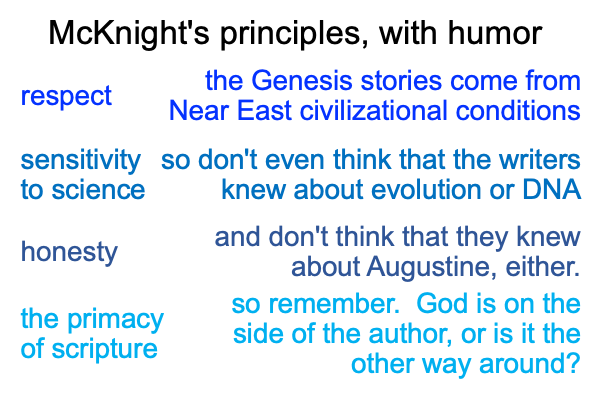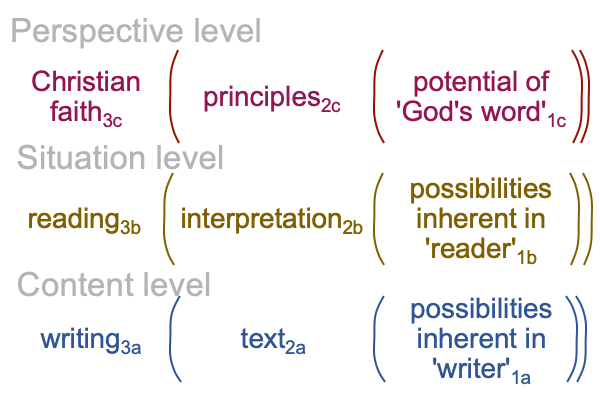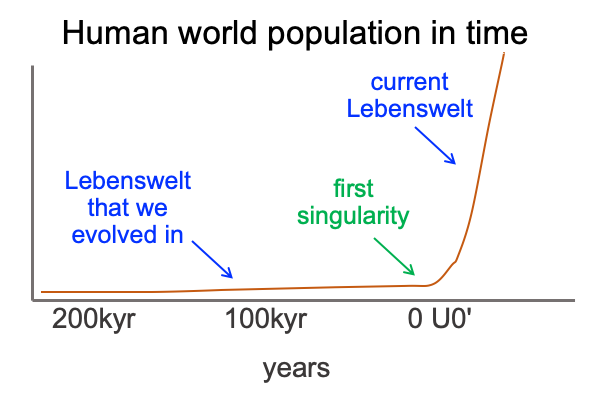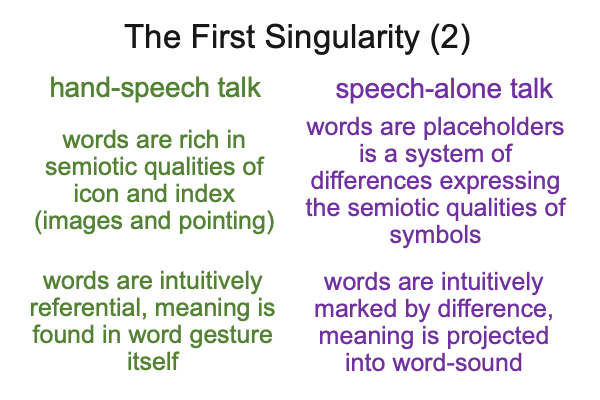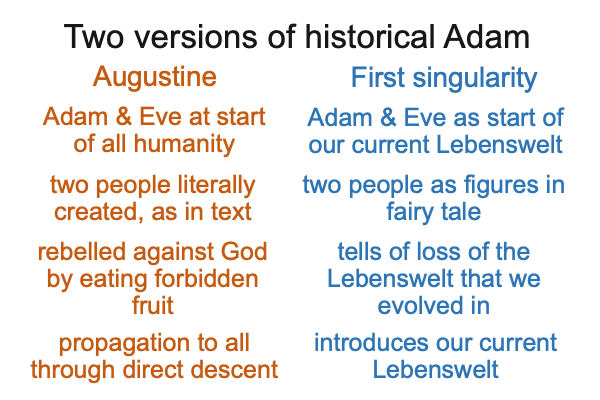Looking at Dennis Venema and Scot McKnight’s Book (2017) “Adam and the Genome” (Part 12 of 22)
0117 Right now I am discussing our current Lebenswelt.
For example, in 2017, various elites in Washington D.C. hosted a March for Science. Here, practitioners of subjective and revolutionary inquiries… or should I say?… experts on capitalism and socialism claimed to “support science”.
In short, the protesters claimed the mantle of rationalism. But, really, they claimed the ideologies of capitalism and socialism formatted in the style of scientific discourse.
See Original Sin and the Post-Truth Condition, by Razie Mah, available at smashwords and other e-book venues for that… um… creative fusion.
Rationalism is now the single actuality encompassing the inquiries of subjectivism and revolution. This is a mystery. It is also a religious message. The federal government has established a religion.
0118 Our civilization used to think that the term, “rational”, means “reasonable”. “Rational” also meant “without passion”. Now, rational inquiry means anything but religious.
Rational inquiry became more and more anti-religious… er… anti-Christian when Big Government (il)Liberalism increased in sovereign power in the United States, before, during and after the so-called Cold War (1945-1989 AD).
0119 That is not all.
So-called progressives consolidated sovereign power in all branches of the federal government. They infiltrated every institution that received advantage from the federal government. They divinized organizational objectives demanding federal action.
The message of subjectivism and revolutionary inquiry is this: The Progressive religion offers personal fulfillment and the furtherance of the collective, by being rational, where “rational” is defined as anything but “religious”… where “religious”… means “Christian”.
Amen!
0120 What about Burbidge’s proposal of a new academic tradition, the University of Listening?
Here is where I attain pure hilarity.
0121 Clearly, BG(il)Ls have redefined the word “rational”. Rational used to mean reasonable or without passion. Now, it means not religious. Also, it means “scientific”, if you catch my drift. That is the only way that subjectivity and revolution fit under the one roof of so-called “rationality”. Trust the science. Science is rational.
0122 Does that mean that the word “rational” is really no longer appropriate?
Let me shout from my megaphone, “The contradicting and complementing universities of subjectivism and revolutionought to throw off their old singular actuality.“
But, what new word needs to be forged in order to replace the old single actuality of the University of Rationalism?
0123 I want to coin a new word for the single actuality composed of the two intersecting actualities.
The word should sound like “university”.
So, I propose the term “you listen to me” collapsed into the spoonerism “ulistentome”.
0124 Here is the intersection that I advocate.
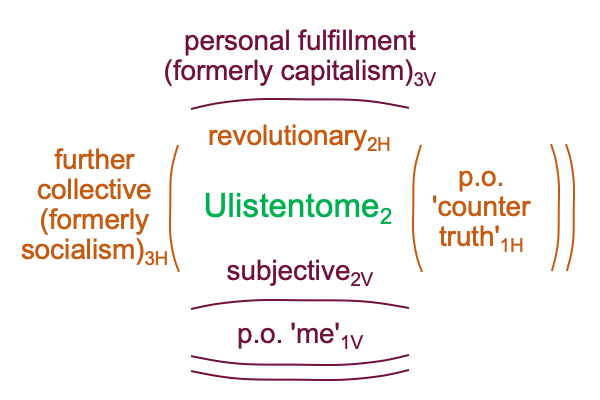
0125 I propose that the term university be replaced by ulistentome.
Also, the word college should give way to harangue.
Seminary should become hope for salvation.
0126 Three academic institutions stand out in Boston. These are Harvard Ulistentome, Boston Harangue and the Gordon-Conwell Theological Hope for Salvation. The first two are BG(il)L. I am not sure about the third, explaining why I suggest the label: hope for salvation.
0127 Here is an assignment for the Christian student who would abandon faith in Jesus, the Messiah, when Adam and Eve are no longer the biological parents of the entire human species.
Compare these three messages (or intersections): descent with modification (or species), what is good and what is evil, and ulistentome. Compare similar elements within these three relational structures. See how they resonate. Savor the ironies. See how they illuminate one another.
0128 These resonances, ironies and illuminations ripple across the curtain that Venema lowers on Augustine’s drama of the story of Adam and Eve. There is more to descent with modification than meets the eye. Evangelicals may no longer be able to watch Augustine’s drama, but the curtain has come alive. Evolutionary biology contains a religious message in the intersection of adaptation and phenotype.
Evolutionary biology manifests a mystery.


